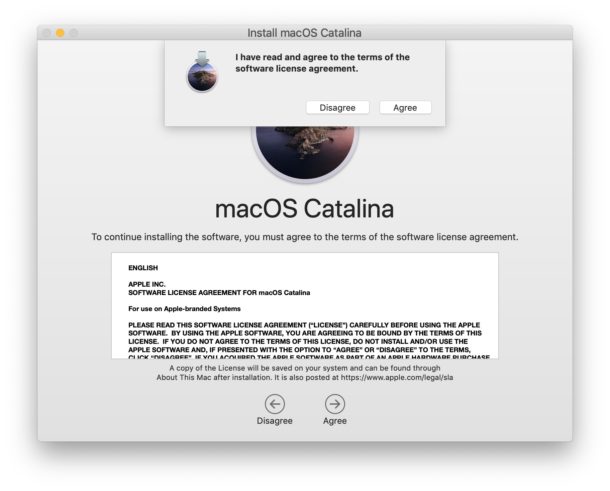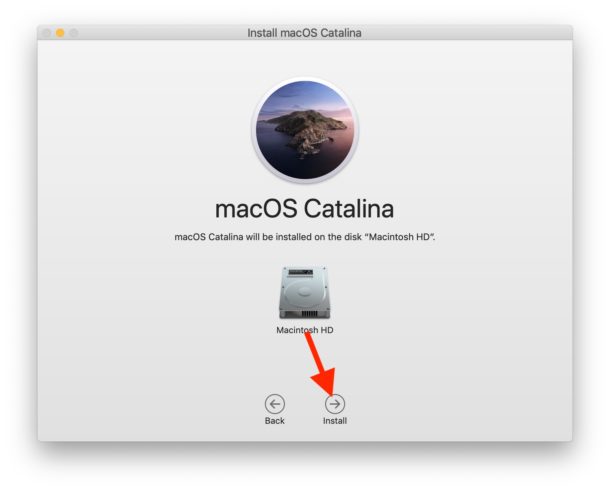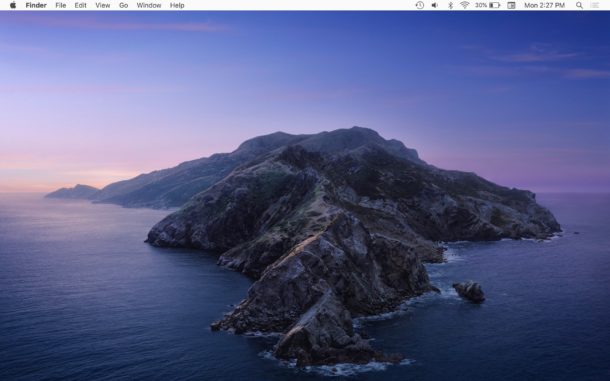How to Update & Install MacOS Catalina

Want to install MacOS Catalina on a Mac? This article will show you how you can install and update MacOS Catalina upgrade on any compatible Mac. It’s a fairly straight forward process, and by following the steps you should be running the latest and greatest MacOS Catalina 10.15 in short order.
If you want more advice on getting prepared for MacOS Catalina, you can read here.
If you’re up in the air and not sure whether or not you should update to MacOS Catalina, check this article for some thoughts on that matter.
How to Install MacOS Catalina Upgrade on a Mac
We’ll break down the steps for installing MacOS Catalina into three distinct sections; making sure the Mac supports the latest MacOS 10.15 release, backing up the Mac, and finally installing the MacOS Catalina update itself.
Make sure that your Mac is plugged into a power source, and connected to wi-fi or an internet connection before beginning.
1: Check Mac Compatibility
Not all Macs support MacOS Catalina, but if your Mac was built after 2012 then it probably does. You can view a list of MacOS Catalina supported Macs here.
Make sure you have at least 15GB of free storage available as well.
We’ve mentioned this numerous times before but you might also want to make sure you’re not dependent on any 32-bit apps, since those will not work with MacOS Catalina. You can see all 32-bit apps on a Mac using System Information.
2: Backup the Entire Mac
It is absolutely critical to backup your entire Mac before installing any system software update, particularly major software updates like MacOS Catalina.
Most Mac users backup with Time Machine, but if you use another service that’s fine too, as long as you have a full and complete backup of your Mac and data on the computer.
If you don’t yet have a backup situation, then set up Time Machine backups on Mac with these instructions first. You will need an external hard drive for Time Machine backups, you can buy an external hard drive for affordable prices on Amazon at nearly any electronic retailer.
3: Installing the MacOS Catalina Upgrade
Anyone can download MacOS Catalina for free from the Mac App Store, or from the Software Updates section on their compatible Mac.
- Backup the Mac if you haven’t done so already
- Go to the Apple menu and choose “System Preferences”, then go to “Software Update”
- When “MacOS Catalina” shows as available, click on “Upgrade Now” (if it doesn’t show as available, go through the App Store first)
- When the MacOS Catalina installer has downloaded, click on “Next” *
- Agree to the terms and conditions of using and installing MacOS Catalina
- Choose the destination hard drive for MacOS Catalina, for most users it will be “Macintosh HD”, then click “Install”
- Let MacOS Catalina install completely, the Mac will reboot automatically during this process, when finished the Mac will boot directly to the MacOS Catalina desktop





That’s all there is to it, now you’re running MacOS Catalina!
All future software updates to MacOS Catalina will arrive and be available to download from the Software Update section of System Preferences. You’ll want to periodically check for updates as bug fixes and security updates are released for the new Mac operating system. You can also choose to automatically install MacOS system software updates if that’s easier for you.
It’ll be a good idea to install any available software updates to MacOS Catalina as they come along, as there are mixed reports of bugs, issues, and problems with MacOS Catalina that some users are experiencing, which can be frustrating to deal with.
If you were previously running a beta version of MacOS Catalina, you might want to opt out of beta macOS system software updates now that the final version is out, otherwise you’ll be getting beta updates for point releases.
* If you plan on making a bootable MacOS Catalina UBS installer you’ll want to quit out of the installer application to do that before updating to Catalina, otherwise the installer app is automatically removed after successful installation.


I’ve tried three times to install Catalina but keep getting the message “storage system verify or repair failed. :(-69716).” Does anyone know what this means?
The new feature in Mail that is supposed to allow us to Block Contacts and have them go straight to Trash, instead of Junk folder, does not work in my Catalina. Talked to Apple but after a long time, they decided I may need to re-install Catalina. Does anyone else have this problem? I hate to go through the whole re-install process if I don’t have to.
I am waiting for the mail app to open – how long will it take>. I have waited almost 2 hours and it seems to have stopped.??
If you are running High sierra or Mojave there is NO NEED to upgrade. You will continue to receive security updates, keeping you safe, and you won’t have the worries of incompatibility for 3rd party software, of which there is a LOT.Apple replies on consumers to find these bugs, and for this reason I never upgrade until there are several revisions, and then I install on a separate partition so I can test before committing.
Obviously the very first thing to do if you choose to upgrade is do a full backup that you can boot and restore to easily.
I highly recommend that you install on a separate partition and test drive. Catalina as i read is very plagued with issues of incompatibility, so make sure before you commit that any 3rd party software is going to work with it.
I have an iMac and two MacBook Pro computers. So decided to update one of the MBP’s all went well but then it hung, so left for about 45 minutes then rebooted the laptop and all is fine. I previously tried to get a driver for my Canon MG6150 printer and was told it would not be supported under MAC OS Catalina, however, it works exactly as expected. Only minor problem I have is trying to connect a Windows 7 PC to the laptop over my network, which seems to be a bit of a problem. Still working on that issue. Otherwise all went well.
I had no problems at all installing Catalina (iMac 2013) replacing Mojave. Everything had been backed up to the Time Capsule exactly as has been recommended. And after getting certain settings right all is in order… EXCEPT – my entire Time Machine records have been wiped out and replaced with the Catalina system. Including previous history of Documents etc. Current user docs are there – just no history. I cannot see any warnings that this might happen. I obviously should have “superDupered” it but thought it unnecessary with the excellent Time Machine doing its job.
Hmmm…
Not even coming close to it until the Mail catastrophe is proven no longer a problem. Maybe by the time the next version of macOS (10.16) come out those who must continue to create job security by not writing code properly and still declare it “GOLDEN”, I’ll consider it. To much smell from the barnyard in it now.
Ensure that your MacBook is running latest BootROM before installing Catalina. I have a MacBook Air Mid-2012 (in the compatible list) unable to start installation via USB installer, showing a stop/forbidden sign on boot.